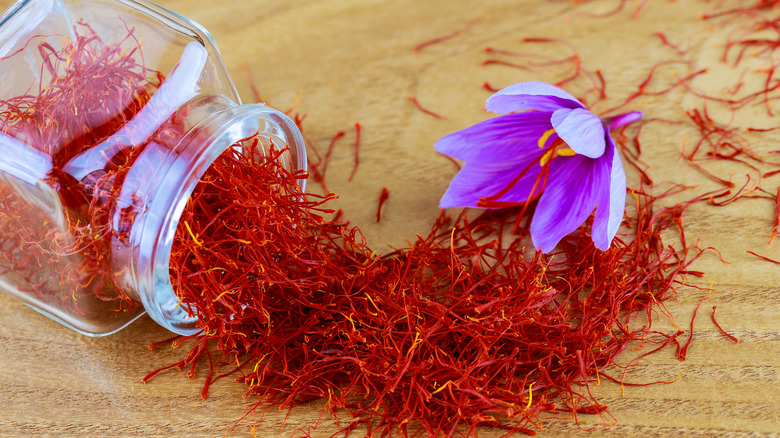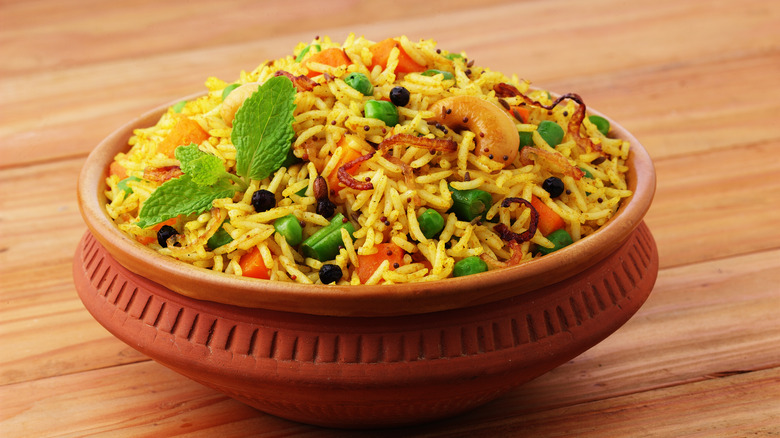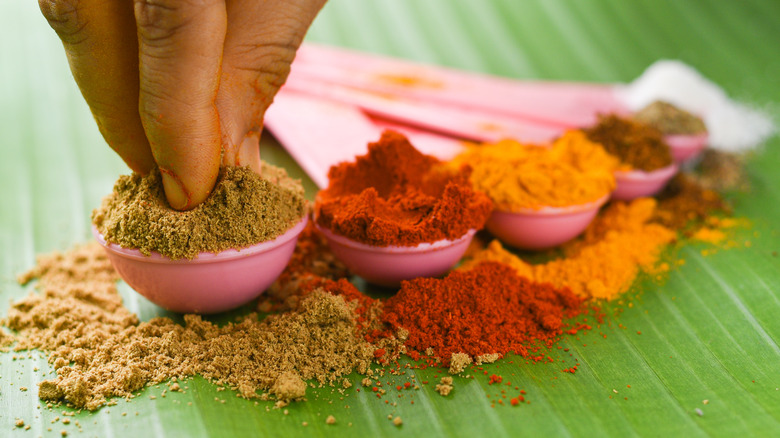Bloom Saffron For More Flavorful Biryani
A biryani platter tinged with mesmerizing spices is a food lover's dream. It's like Mother Nature threw an exotic party and invited all her kingdom's flavors, colors, and aromas to dance in harmony on your tastebuds. If only that glorious dreamscape were as easy as it looked.
In reality, creating a steaming dish of delicious biryani means coaxing flavor out of each spice — and saffron is the most delicate of them all. Before making their way to the biryani spice collective, each colorful crimson saffron thread gets carefully hand-plucked from a tiny blooming crocus flower, then hand-dried with tender care. With only three stamen threads per flower, it takes about 75,000 crocus flowers to create a single pound of saffron, making it the world's most expensive spice. One of the most effective ways to pull the brilliant colors and flavors out of saffron and into your biryani is to "bloom" the threads in your kitchen.
In the culinary sense, blooming an ingredient, including saffron, has nothing to do with flowers and everything to do with nurturing its full potential. If you have some whispy, royal saffron threads on hand when making a biryani, thank the culinary deities lurking in your kitchen, and prepare for your own blooming ceremony.
Blooming your way to biryani perfection
Blooming a food ingredient is nothing new, though the process has likely gone by many names over centuries of cooking in hundreds of cultures. When applied to spices, blooming often means heating them in oil to temper and extract extra flavor. It then becomes part of the dish you're creating, such as biryani.
However, if you're blooming more than one spice for a biryani recipe, keep the saffron separate for its own process. The delicacy of saffron threads requires a gentler hand and milder liquid, typically water, milk, or chicken broth. There are two common methods for blooming saffron, one using hot water and another using ice cubes. Both blooming processes call for eight to 10 saffron threads that are ground into a powder. Traditional customs call for grinding with a mortar and pestle, but the back of a spoon will suffice. The delicate stems will crush easily with minimal pressure.
Heat it up or cool it down
For the hot-water version of blooming saffron, just put the ground powder into a bowl and add about six tablespoons of boiling water. Let it steep for up to 20 minutes or until a fragrant golden liquid emerges.
The cold method takes longer, but some chefs prefer it because the heat can blunt the flavor. Remove a handful of ice cubes from your freezer, place them in a bowl, and sprinkle them with the ground saffron. As the ice slowly melts, the water merges with the powder. Blend by stirring, and the liquid is ready to add to your dish.
Depending on regional recipes, bloomed saffron will have plenty of company in glorious biryani blends of toasted spices, melted ghee, fried meats, toasted nuts, and basmati rice. You can add the concentrated saffron liquid at any stage, but some cooks advocate saving it to finish the dish. That's because such a fragrant and vividly hued ingredient could get lost in the bold parade of fellow spices. After all those little crocus stamens have endured, they certainly deserve the crowning glory.


